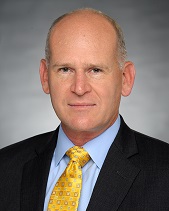By 2030, one in every five Americans will be 65 or older, according to the U.S. Census Bureau. That year, Medicare spending will hit $1.7 trillion, up from $835 billion in 2020, estimates the Congressional Budget Office.
But don’t expect business as usual. While The Centers for Medicare & Medicaid Services (CMS) have experimented with accountable care and alternative payments since 2010, the federal government has picked this decade to make value-based care and payments mainstream. CMS has set a goal of transitioning every Medicare fee-for-service (FFS) beneficiary and the vast majority of Medicaid beneficiaries into programs through which providers are accountable for quality and total cost of care by 2030.
As our November 18 webinar Maximizing Medicare Revenue Through Payment Models made clear, providers and payers must put this deadline at the center of their Medicare strategy and roadmap to value-based care and payments. Medicare strategies also must address other CMS priorities, namely:
- Advancing health equity
- Making care more affordable and accessible
- Improving patient experience and outcomes through care innovation
- Forming multi-payer partnerships to achieve system transformation by 2030
The current landscape
The biggest growth market within Medicare is Medicare Advantage plans, now covering 42% of beneficiaries, according to KFF. Competition is heating up as seniors flock to Medicare Advantage (MA)–payers are becoming providers, providers are launching their own plans and new players are entering the market. MA programs for chronic and dual special needs, such as end-stage renal disease, are growing even faster. They offer additional benefits to beneficiaries and enhanced revenue opportunity in risk arrangements, particularly based on percent of premium.
At the same time, CMS continues to offer an array of Medicare risk options for providers and payers wherever they currently are in their journey to managing populations and accepting full risk. As of now, providers are not required to enroll in programs that include downside risk. However, for those tempted to stick with FFS as long as possible, that approach is likely to backfire. CMS is considering making alternative payments mandatory versus voluntary and continues to transition toward more downside risk for providers.
CMS is also considering another round of applications for Medicare Direct Contracting (MDC) for 2023, a potential opportunity for providers that sat out the last couple rounds, irrespective of whether they have been in shared savings programs previously.
Building blocks for the future
By taking on greater risk, providers and payers can realize greater rewards, i.e., Medicare revenues—assuming, of course, they are able to put into place the right capabilities and gain experience in managing populations and total cost of care. The playbook for achieving a strong return on investment on Medicare programs includes:
1. Revenue Optimization and Growth
A key to success is ensuring your members are in the proper products and programs, especially those with special needs. It requires having the right processes in place to fully evaluate member needs from a medical risk stratification and based on the social determinants of health that impact specific members. This kind of assessment takes quite a bit of effort, but the goal is to have members receive the care they need, optimize needed benefits through product choice and ensure revenue aligns with those needs.
2. Quality Management
Optimizing revenue starts with measuring performance based on quality metrics and outcomes, then working to improve. It’s an ongoing process–understanding the current state, then identifying and addressing gaps, outliers and other improvement levers, followed by tracking the results from moving the levers and adjusting further as needed. It all depends on obtaining timely, accurate and complete data, analyzing that data and sharing it so providers can appropriately manage member health and intervene when necessary. It takes consistent processes to ensure the right coding so members get the care they need and providers obtain the revenue they deserve. Provider training also is important so clinicians understand how they need to evolve practice patterns in order to enhance quality and outcomes.
3. Utilization Management
In 2019, 5% of the population accounted for nearly half of health care spending according to KFF. It’s critical to know who the highest-need, sickest patients are, how they consume health care, and focus on how to engage them.
But that’s not enough. It’s vital to develop a process to stratify risk for all members, then work toward shifting from treating sick patients to caring for all. It begins with understanding the various member populations—their behaviors, health status and needs. That information is critical for prioritizing assignment to care management programs.
4. Contract Management
A deep understanding of the requirements and differences of the various Medicare programs, from Shared Savings to Direct Contracting and MA, is fundamental. As is a strong grasp of the variations within each program, such as global or professional risk for MDC. For example, membership attribution can be voluntary, assigned, retrospective or prospective, all depending on the program. Risk adjustment methodologies also vary widely by program.
This understanding clarifies which programs are the best fit now and which ones to put on the organization’s glide path to full risk and capitation. A thorough understanding of each program drives investment in everything from care models to network design for specific populations and geographies.
Documentation also plays an important role. It’s essential for ensuring participants are meeting program requirements to earn financial incentives and to even stay in the program. Establishing procedures and implementing tools, supported by training, is crucial to accurately capturing quality work.
5. Network Development and Management
Providers getting into risk must understand the markets and populations they are focused on serving and establish the right contracted or employed provider network to serve the population and service area. This includes ensuring easy access to primary and preventive care and availability of high-performing specialists, hospitals, ambulatory surgery centers, skilled nursing, home health and community based non-medical services.
Beyond the baseline of adequate coverage and access, it’s important to assess network providers and provider organizations based on quality and cost. Performance information should drive both recruitment and ongoing optimization.
6. Physician Alignment
Financial incentives are the key to setting and pursuing shared goals and priorities. A unified strategy rests on accurate, transparent data of individual and overall performance, based on five to 10 specific metrics. It also requires governance and processes to engage providers.
Higher-performing specialists, for example, could be aligned with primary care physicians and incentivized to help reduce unnecessary utilization, total cost of care and out-of-network leakage. Independent community PCPs could be capitated, with bonuses related to improving quality and decreasing out-of-network leakage. Physician incentives should align with the creating the best outcomes for members and driving the maximum revenue from the contracts and programs in which an organization participates.
From strategy to execution
Organizations don’t have to develop all these capabilities internally. They may want to start by assessing their current management services expertise against what it would take and how long to develop strong competencies in each area. They then can make an informed decision on which capabilities to keep in-house and which ones to acquire through co-managed or managed service organizations.
These same capabilities can be leveraged to serve non-Medicare populations as well. But at a minimum, whether they choose to build or buy, organizations will need all of these capabilities to attract a growing share of Medicare beneficiaries, care for them profitably and maximize Medicare revenues.
For more information, please contact info@copehealthsolutions.com.


